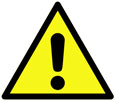
The improper use of machine tools and their accessories can result in serious injury. Before using this tool, thoroughly read the instructions and make sure you understand its proper and safe use.
These holders are identical to our standard 55° Insert Tool Holders, with one key distinction.
While our original 55° holders are designed for DPMT inserts with an 11° relief angle, these updated holders are configured for DCMT inserts, which feature a 7° relief angle.
Over time, insert availability and design options evolve. The DPMT insert, once standard in our 55° holders, has become increasingly scarce and offers fewer chip breaker variations. In contrast, the DCMT insert is widely available and comes in a broad range of styles, making it a more versatile and accessible option.
Note: Many customers machining brass found excellent results with our uncoated 11° DPMT insert featuring a straight-groove chip breaker. Unfortunately, this insert is no longer available. That’s why we introduced these updated holders to accommodate 7° DCMT inserts.
For those working with brass, insert P/N 7613 is an ideal replacement. It cuts cleanly and delivers a high-quality surface finish.
Coated inserts with various chip breaker designs are still available for both DPMT and DCMT styles.
Holders & Inserts sold separately

| Insert Holder Material | Case Hardened Steel |
|---|---|
| Body Coating | Black Oxide |
| Insert Material | Carbide |